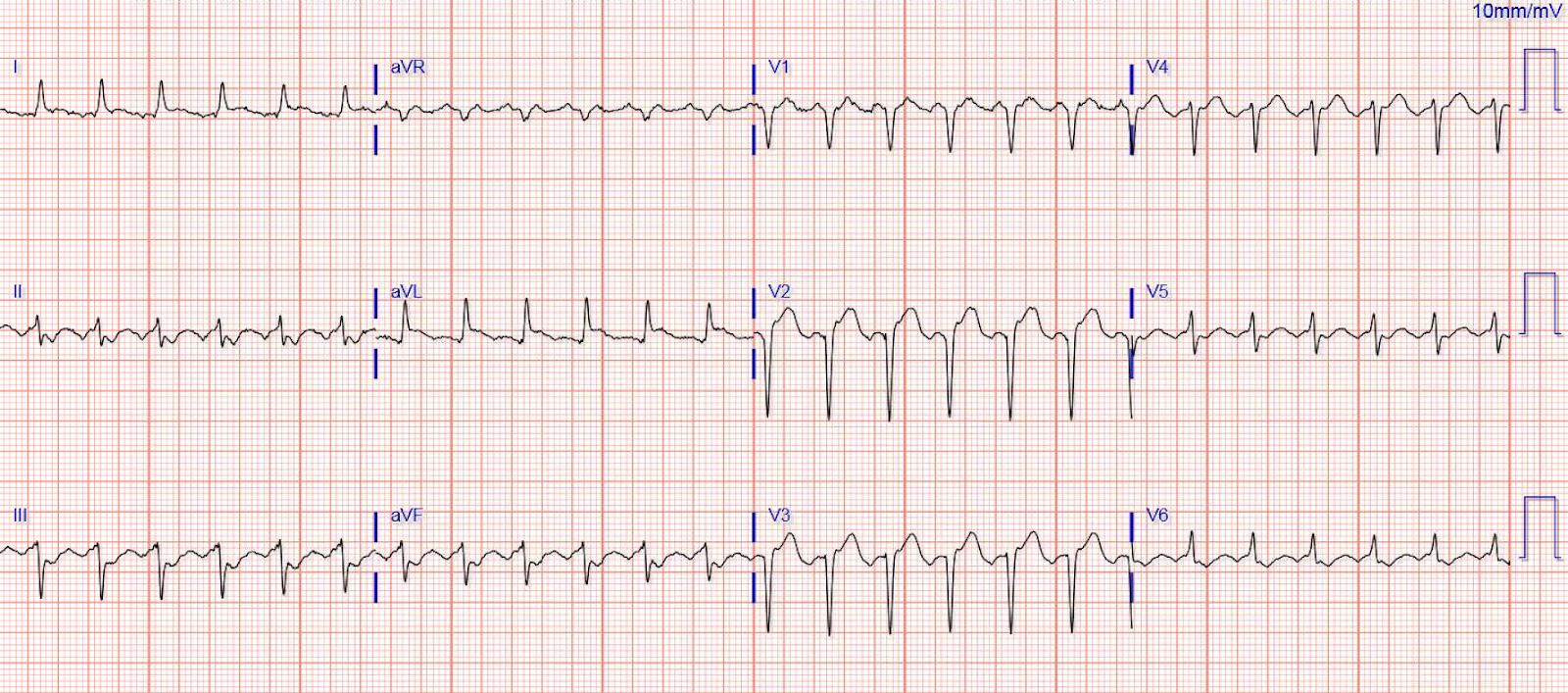


No patients had interatrial or intra-atrial conduction block during sinus rhythm, suggesting functional intra-atrial block as a mechanism for simultaneous atrial fibrillation/flutter. In each case, the surface 12-lead ECG reflected the right atrial activation pattern. The atrial fibrillation was localized to all or a portion of one atrium, during which the other atrium maintained atrial flutter. Twelve transient episodes of simultaneous atrial fibrillation and flutter were observed in five patients. The arrhythmias observed occurred following attempts at entrainment, or spontaneously in one case. In patients undergoing radiofrequency ablation for atrial flutter, an attempt was made to entrain atrial flutter by pacing in the right atrium. We report the occurrence and ECG manifestations of simultaneous atrial fibrillation and flutter in patients undergoing attempted catheter ablation of atrial flutter. However, more recent conceptions of atrial fibrillation/flutter postulate that the pattern is due to a relatively organized (type I) form of atrial fibrillation. reports suggested that some patients with "atrial fibrillation/flutter" might have atrial fibrillation in one atrium and atrial flutter in the other. What's the difference between atrial flutter and atrial fibrillation? (n.d.).medical-conditions/blood-heart-circulation/atrial-flutter/treatments.html Atrial flutter versus atrial fibrillation in a general population: Differences in comorbidities associated with their respective onset. diseases-conditions/atrial-fibrillation/diagnosis-treatment/treatment/txc-20164944

nottingham.ac.uk/nursing/practice/resources/cardiology/fibrillation/atrial_flutter.php Cardiology teaching package: Atrial flutter.Obstructive sleep apnea in patients with typical atrial flutter: Prevalence and impact on arrhythmia control outcome. Patient-Resources/Heart-Diseases-Disorders/Atrial-Flutter You can learn more about how we ensure our content is accurate and current by reading our editorial policy. Healthline has strict sourcing guidelines and relies on peer-reviewed studies, academic research institutions, and medical associations. Still, ablation therapy is typically only used when medications can’t control the conditions. However, ablation is usually considered the best treatment for atrial flutter. Medication is usually the first treatment for AFib. The surgeon makes small cuts or burns in the heart’s atria. Maze surgery: Maze surgery is an open-heart surgery. After this type of ablation, you’ll need a pacemaker to maintain a regular rhythm. The AV node connects the atria and ventricles. NOACs include dabigatran (Pradaxa), rivaroxaban (Xarelto), apixaban (Eliquis) and edoxaban (Savaysa).Įlectrical cardioversion: This procedure uses an electrical shock to reset the rhythm of your heart.Ĭatheter ablation: Catheter ablation uses radiofrequency energy to destroy the area inside your heart that’s causing the abnormal heart rhythm.Ītrioventricular (AV) node ablation: This procedure uses radio waves to destroy the AV node. NOACs are now recommended over warfarin unless the person has moderate to severe mitral stenosis or has an artificial heart valve. blood-thinning medications such as non-vitamin K oral anticoagulants (NOACs) or warfarin (Coumadin) to prevent stroke or heart attack.amiodarone, propafenone, and flecainide to convert the rhythm back to normal.calcium channel blockers and beta-blockers to regulate the heart rate.Treatment for both conditions may involve: Treatment for AFib and atrial flutter has the same goals: Restore the normal rhythm of the heart and prevent blood clots.


 0 kommentar(er)
0 kommentar(er)
